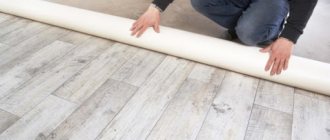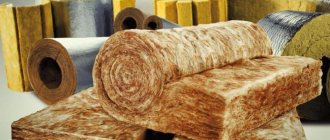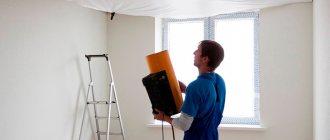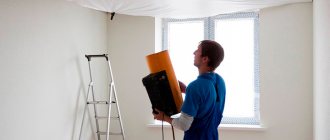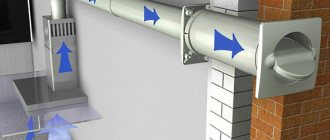Floor decor made from natural wood is presented on the building materials market in a wide range. Let's consider the variety of product groups and how parquet boards are laid depending on various circumstances. Let's get acquainted with the features of the technological process and the requirements for the rough foundation. Read the article to the end, then, taking into account the information received, the work performed will give a durable and high-quality result.
Classic parquet Source topstroytorg.ru
Types and characteristics of coatings
The original form of flooring is piece parquet made from solid wood. For ease of installation, a pair of mounting edges (one longitudinal and one end) were formed for a tongue-and-groove connection. In order to save natural resources, reduce the cost of the final product and speed up the installation process, parquet boards were invented. Technically, the design is similar, but the dimensions are increased to 25*200 cm. But the structure has been changed radically. This material is a multilayer panel:
- Facing - a cut of solid rock. Characterized by high wear resistance. The layer thickness reaches 4 mm. Requirements for decorative material: complete absence of defects. The fabric can be seamless and glued together from individual lamellas.
- The core is a composite of coniferous dies with vertical or semi-vertical annual rings. The width of each workpiece is 20-30 mm, thickness is 7-8 mm. The middle layer is also the basis for the formation of mounting edges. The arrangement of identical elements is perpendicular to the total length of the parquet board.
Structure of a three-layer board Source yandex.net
- The base is a solid board up to 4 mm thick. Performs a stabilizing function - a supporting platform with high bending strength and a low coefficient of thermal expansion.
This is the traditional option. After drying, the glued workpieces are carefully ground, and minor (permissible) defects are corrected with special putty. Next, the material is impregnated with fire retardants, protective compounds against moisture, and biological activity. Finally, the surface is coated with parquet varnish in several layers.
Based on the number of dies in the decorative layer, there are three main types of boards:
- Single strip or classic . Location – longitudinal or formwork. The second option can additionally be edged or have additional decorative plug inserts.
- Two-way . It is assembled from two dies with a formwork arrangement or staggered into half of the dies.
- Three-lane . Similar to block parquet due to the gluing of the canvas apart.
There may also be samples with a large number of wooden planks. Products with a Danish pattern or a modular type look interesting. Using the first, you can imitate the laying of natural parquet according to the “braid” pattern, the second allows you to assemble more complex patterns.
Modular coating Source wood-floors.ru
An alternative to solid wood products
There are modified products that are similar in the technology of laying parquet boards, but differ in composition. Such samples often belong to the budget class. The difference is as follows:
- The base is plywood with a layer of 1.5 cm. The canvas is made from birch, spruce or pine. There is also chipboard or fibreboard.
- The core is wooden slats either with a dense transverse arrangement or an HDF board. The thickness of the layer is 8-9 mm.
- The front side is veneer made of various types of wood or textured paper with melamine or acrylic impregnation. The thickness of the cladding is 0.5-6 mm. It is acceptable to tint the workpiece in order to imitate a more expensive material. A blade with a thickness of 4 mm or more can be sanded and scraped to a reasonable extent (at least 1 mm should remain). The finishing coat can be varnish or oil.
Veneered parquet board Source laminatkd.ru
On the construction market you can also find a two-layer modification made of plywood and veneer with a layer of 2-3 mm. Here it is important to familiarize yourself in advance with how to lay such a parquet board. In the recommendations, the manufacturer pays attention to the brand and composition of the suitable adhesive for installation.
Additional classification for ease of coating selection
The division of parquet boards into classes, as a rule, concerns only samples different from the traditional one (each layer is made of solid wood). They indicate class affiliation with two numbers: purpose, wear resistance. There are 6 options in total: three for residential premises (2) and three for public premises (3). The second number progressively indicates endurance relative to cross-country ability: 1, 2 and 3. For example, for 23, the service life starts from 5 years, and for 32-33 - over 15 years, and here increased moisture resistance is manifested.
Parquet class 34 Source davinchisochi.ru
Taking into account the growing demand for “warm floors”, manufacturers began to supply parquet boards to the construction market, which can be combined with a similar rough base. The material requirements here are:
- wood raw materials should be as stable as possible (with a minimum coefficient of thermal and moisture expansion): oak, walnut, ash;
- total product thickness from 13 to 17 mm;
- chamfered edge – as the blade moves, changes at the joints will be visually smoothed out.
It is worth noting that with such a floor covering the efficiency of the heater decreases. The operating mode of the system is limited to +26 degrees Celsius (so glue containing formaldehyde is safe for humans and pets). A humidifier must be constantly running in the room to prevent the coating from drying out. The packaging has a distinctive sign (one of them) indicating the suitability of the material for use in conditions where the base is heated.
Marking of coatings compatible with “warm floors” Source kitchenremont.ru
See also: Catalog of companies that specialize in finishing materials and related work
Briefly about the lock connection
Before assembling the covering, you need to find out how to properly lay parquet boards of a particular series. If the locking connection is made using the Click type, then the tenon should be inserted into the groove at an angle of 20-30 degrees. In the modernized version of Lock-Click - in straight lines, as well as vertically or horizontally. This is convenient for forming a web with complex geometry along a plane.
Another design solution is designated as 3G, 4G or 5G. Here, in a thicket, a comb with a plastic or aluminum petal is immersed in the end edge with a longitudinal recess until a characteristic click appears. Additional elements act as a stopper and seal at the joining area of the products.
Methods for installing parquet boards
Once the tool is assembled and the work front is prepared, you can proceed directly to installation. It’s worth mentioning here that there are three main installation methods:
- floating;
- glue fastening;
- using additional fasteners.
According to the installation method, a distinction is made between the longitudinal and diagonal method. When laying longitudinally, the boards are placed parallel to the wall, moving in the direction of the door, in the second case, diagonally from one of the corners. The longitudinal method is simpler; there is not much waste left during the work, but the diagonal method looks more impressive.
Floating installation
The peculiarity of floating installation is that the boards are not attached to the floor. The rigidity and immobility of the coating is achieved only through reliable locking connections. It is from this that all the pros and cons of such a configuration emerge:
- easy to install;
- it is easy to correct mistakes made during work;
- it’s easy to replace several damaged boards;
- it is possible to dismantle the floor and literally move it to another room;
- the coating is immune to changes in humidity and temperature;
- saving on adhesive composition.
As disadvantages, it is worth noting the need to carefully level the subfloor, the limitation on surface area; you should not use this method if the room is more than 50 square meters. Also, you cannot lay the board in this way in a room where a high load on the floor is expected.
Step-by-step instructions for carrying out the work are as follows.
- First, lay the board along the longest wall of the room, from left to right. The part of the castle that will face the wall is cut off from the board. A complete row is assembled, the end board is cut to fit.
- The coating should retreat from the walls by 10–15 mm; to achieve this, spacer wedges are used. Many people recommend completely assembling three rows before installing them, then placing wedges and using a bracket to pull the finished canvas, setting it in the desired position. The boards of each subsequent row are laid with a shift, selecting a pattern if necessary.
- The following rows are assembled sequentially; if necessary, the canvas is tapped with light blows of a rubber hammer. The hardest part to lay is the outermost row. Each board must be precisely adjusted in width, and it is important not to forget to leave a gap along the edge to compensate for thermal expansion.
Once the covering is completely laid, the wedges are removed, baseboards and door thresholds are installed. It is advisable to turn on the floor heating or any heating device to raise the temperature in the room and the board to sit in place.
Glue mounting
The essence of this method is reflected in its name - the parquet board is glued to the base using special adhesives. This method is more labor-intensive, but it also has a number of significant advantages:
- there are no restrictions on the area and purpose of the room;
- the coating is resistant to stress;
- Can be used in conjunction with water heated floors.
But this is a labor-intensive installation, and in the future it will be problematic to correct the mistakes made and replace the damaged area. The floor will cost more due to the need to purchase glue. You will have to wait until the glue hardens before you start using it.
It is worth noting that you need to buy the right glue, the composition of which is suitable for the specific board chosen. In addition, you need to work extremely carefully to prevent glue from getting on the front side of the coating.
As in the first case, installation is carried out along the longest wall. Before applying glue, the board is laid out and the outermost one is cut off to create a full row.
A layer of glue 80–100 mm wider than the width of the board is applied to the prepared surface. The glue is evenly distributed over the area using a notched trowel.
Spacer wedges are placed between the first row and the wall. When laying the boards, they must be joined immediately using locking joints. Each laid plank is pressed for better grip. After laying the entire row, it must be additionally secured with self-tapping screws. They are screwed at an angle into the grooves of the lock.
The operation is repeated. Apply glue and lay the next row with a shift of half or a third of the length. First, the ends of adjacent boards are connected, then they are attached to the previous row. If a gap has formed, you need to get rid of it immediately, move the row forward using a wooden block and a hammer.
The finished coating is left for several days until the glue dries completely. After this, the baseboard and thresholds are installed. It would be a good idea to treat the floor with a special compound that will fill the joints and create a perfectly flat surface.
How to lay parquet on a concrete floor
Knowing how to lay parquet boards on a concrete floor is especially important due to the heterogeneity of materials: wood and mineral composition. They have different technical characteristics and exhibit different “behaviors” in relation to variable operating conditions. A brief comparative analysis is given in the table.
| Criterion | Concrete | Parquet |
| Pressure | The surface is destroyed | Compacts |
| Dynamics | Transmits vibrations | Muffles |
| Moisture | Slowly absorbed | Penetrates well |
| Vapor permeability | Almost doesn't breathe | Dries quickly |
| Hardness | High rate | Soft |
| Thermal conductivity | High | Low |
If you study the methods of how to lay a parquet board on a concrete floor, you will notice that all actions are aimed at balancing the difference between materials, eliminating negative probabilities (for example, cement abrasive, condensation). Let's consider the features of each stage of the technological process.
Preparing the subfloor
Before laying the parquet board, you need to properly prepare the rough base, taking into account the method of fixing the decorative canvas. This can be a “floating” coating, fastening the material with glue or hardware with dowels. In any case, a number of requirements are imposed on concrete:
- durable surface over the entire area without cracks, exposed reinforcement, or loose areas;
- a flat plane with a permissible deviation of 2 mm per 2 linear meters in each direction (according to SP 29.13330 of 2011 or SNiP 3.04.01 of 1987);
- the horizontal base can have a slope of up to 0.2% of the total length of the room.
If you plan to install a new screed, then you need to take into account the standardized requirements.
“Wet” screed device Source yandex.net
One of the main things is that the grade of concrete should be at least M150 (you can limit it to this). The humidity of the base does not exceed 5%. Any kind of damage must be repaired:
- cracks should be expanded, primed, fastened and filled with cement mortar;
- remove bare reinforcement from rust, cover it with a 3 cm layer of concrete or insulate it with a long-lasting and high-strength anti-corrosion compound;
- align chips and depressions with a horizontal plane;
- knock down or grind off the protrusions;
- impregnate the loose surface with strengthening soil;
- “cure” foci of biological damage and protect with an antiseptic;
- Treat the finished area with a concrete floor primer.
If it is not necessary to install a screed due to small differences in level, then you can fill the base with a self-leveling solution. Here it is important to pay attention to the permissible thickness of the fill. You cannot exceed the norm or deviate from the recommended recipe, as the result will be very different from the declared one. More often than not, this kind of work has to be redone.
Self-leveling mortar Source sakh.com
Types of installation
You can lay parquet yourself:
- herringbone;
- in a take-off run, with a shift (a la “deck”);
- braided;
- squares from boards of different types of wood.
Herringbone
Laying herringbone parquet is more labor-intensive, but produces a finish with a beautiful and symmetrical pattern. This method of laying out allows for maximum unloading of individual dies due to a more uniform distribution of pressure from above, which reduces the risk of cracking of the coating at the seams.
Herringbone styling
Takeoff
The deck version is the easiest to install. It is allowed to move the dies by 1/4, 1/3 or 1/2 of their length, or even in a chaotic manner to form an asymmetrical pattern on the floor.
Laying out in a run
Network
The “braided” layout allows you to achieve a three-dimensional effect in the floor design. However, this method requires the use of parquet boards from at least two different types of wood, which usually leads to an increase in the cost of the coating. But the finished decor will look not just beautiful, but elegant and luxurious.
Braided laying
Squares
To lay parquet in squares, dies will also need to be taken from several rocks of different shades. This layout is distinguished by aesthetics and elegance, but is very demanding on the skill of the parquet floorer. If the “squares” of individual boards are made too large, they will visually put pressure and reduce the space of the room. And excessively small “squares” can get lost in the interior.
Laying in squares
Video description
The plot reveals the intricacies of installing parquet boards using a floating method:
How to lay parquet boards on concrete using glue
Here, before laying the parquet, it is important to choose the right fixing compound. It must have good adhesion to mineral and wood substrates, have a long service life, and be suitable for flooring. In addition, the following qualities are taken into account:
- minimal shrinkage;
- elasticity after drying;
- low water content;
- moisture resistance;
- environmental friendliness.
Several groups of materials have the following properties:
- Dispersive . Does not smell, dries quickly, does not contain toxins or other harmful substances. But the water content is relatively high, so the use for fixing moisture-resistant parquet (for example, oak, larch) is limited. There is also a long drying time due to the confined space and average adhesion.
Water-based parquet adhesive Source fastly.net
Video description
The video features an interview with a technologist about adhesives for parquet flooring:
It is worth paying attention to the specialist’s recommendation about primers. Concrete must be treated 3 times with intermediate drying. Each layer is applied with a roller perpendicular to the previous one. Corners and perimeter are processed with a brush. The glue can subsequently be applied either with a notched trowel (wavy edge or in increments of up to 3*3 mm).
Gluing parquet material Source gorobzor.ru
Video description
The video clearly shows instructions for installing parquet with glue:
How to properly lay parquet on a wooden floor
The subfloor needs careful preparation before laying parquet boards. If it is an old building, then it is important to identify and correct any problems. These include chips, cracks, rotting and fungal-affected areas, crevices, and swellings. You also need to get rid of creaking and differences in height.
For the event you may need:
- wood putty;
- PVA wood glue;
- screws/nails;
- tools for cutting, sanding and fixing wooden workpieces;
- related equipment and consumables.
Plywood with a thickness of 12 mm or more is often used as a leveling material and base for parquet. The sheets are fastened with hardware with recessed caps. This way there will be no difficulties when sanding the base. Before laying parquet, the floor is impregnated with antiseptics. Further installation is carried out using the adhesive or floating method.
Necessary tool
Laying parquet boards is also simple because almost every owner has the tools necessary for the job. If you don’t have something, you can buy it or rent it. By the way, the money saved, which would have been used to pay for the work of the craftsmen, is quite enough to purchase this missing tool.
What tool is needed for the job:
- jigsaw;
- difficulties with the first option - then a hacksaw with a fine tooth will come to the rescue;
- small rubber mallet;
- plastic tamping block;
- spacer wedges;
- roulette;
- a clamp is needed to secure the last panel.

